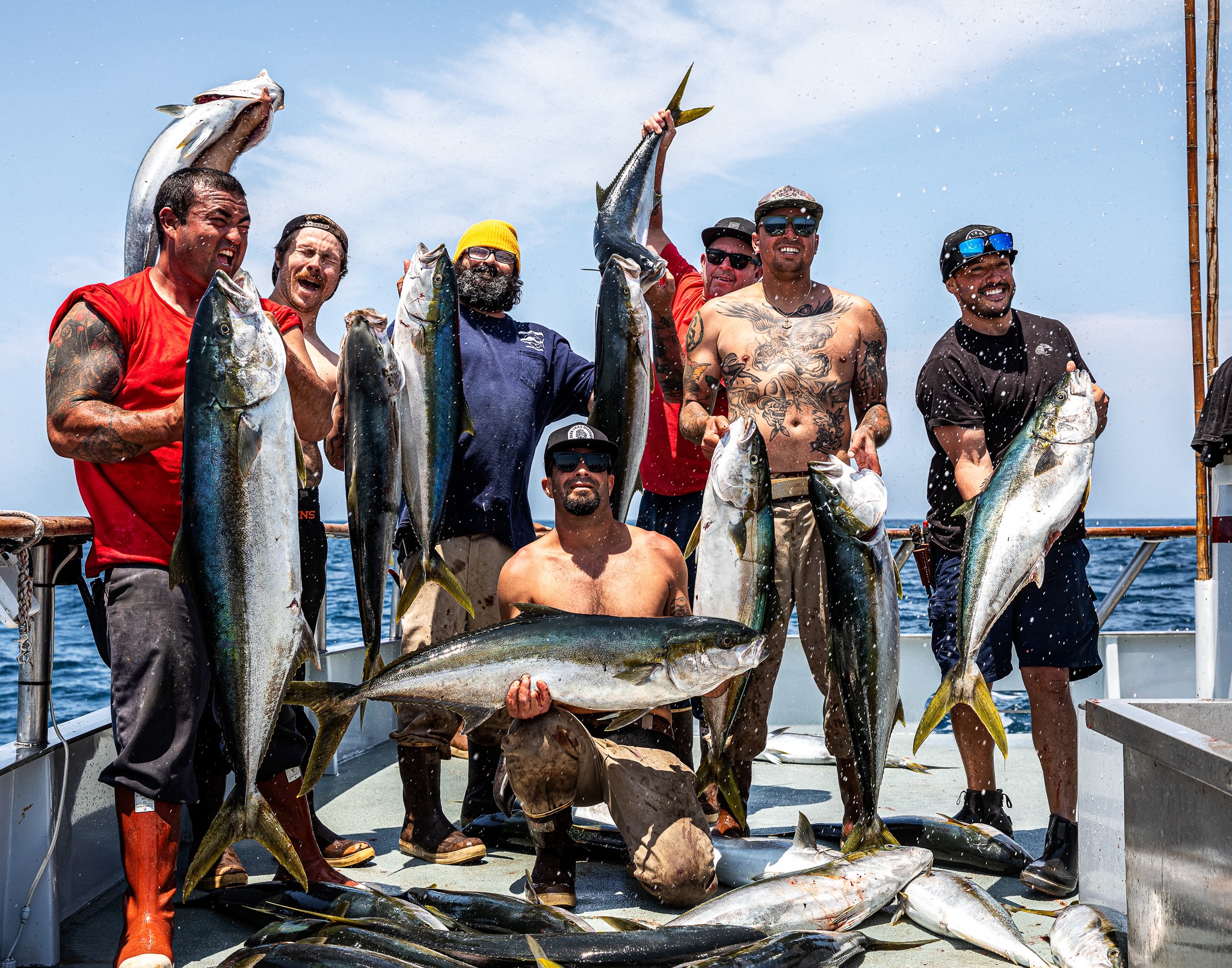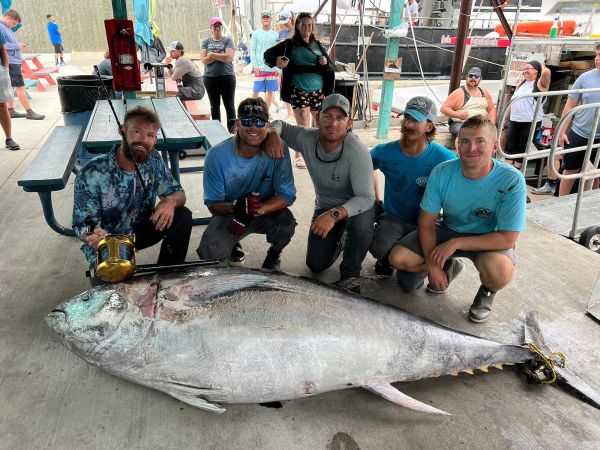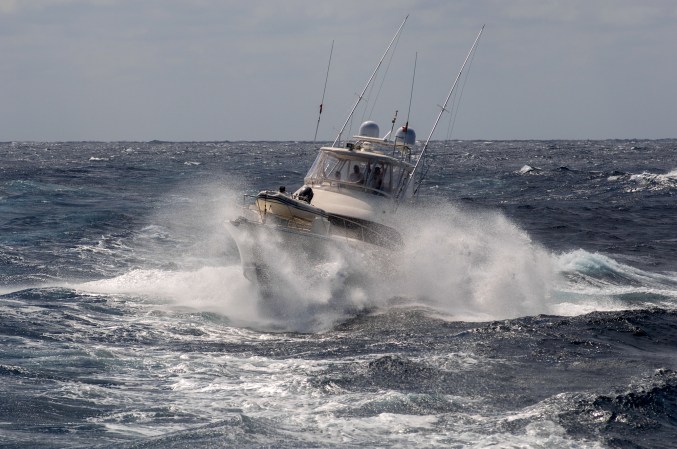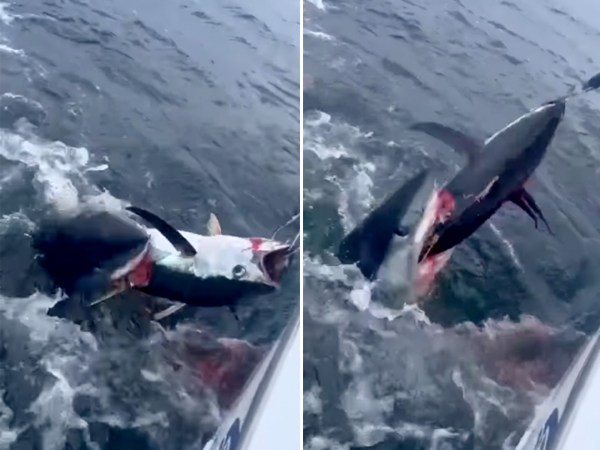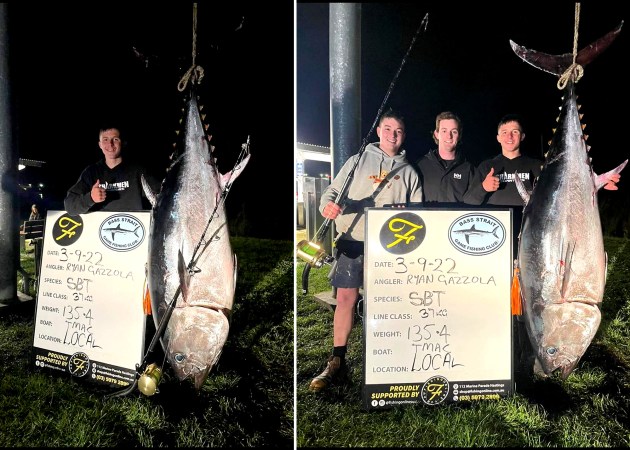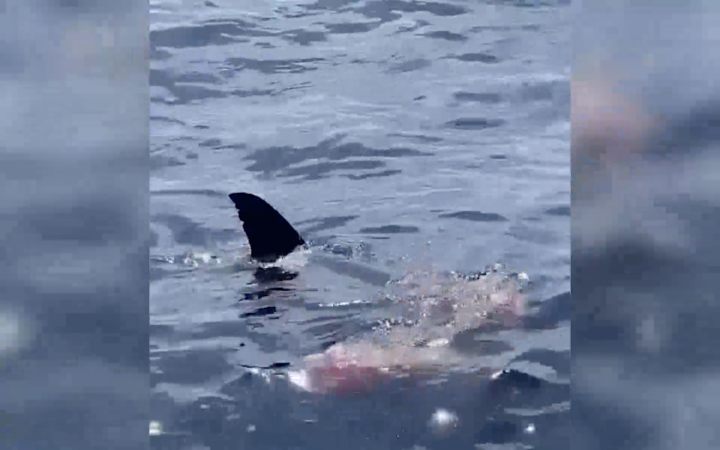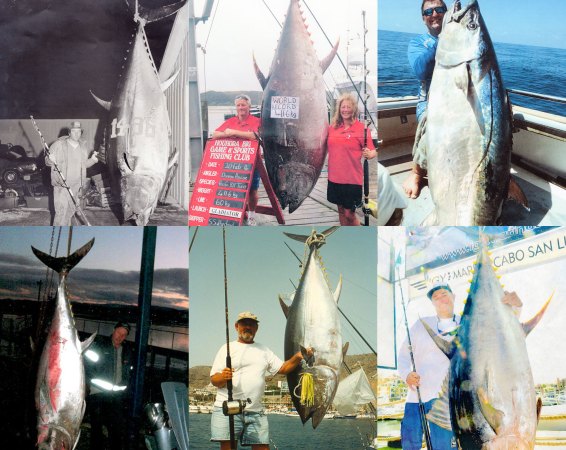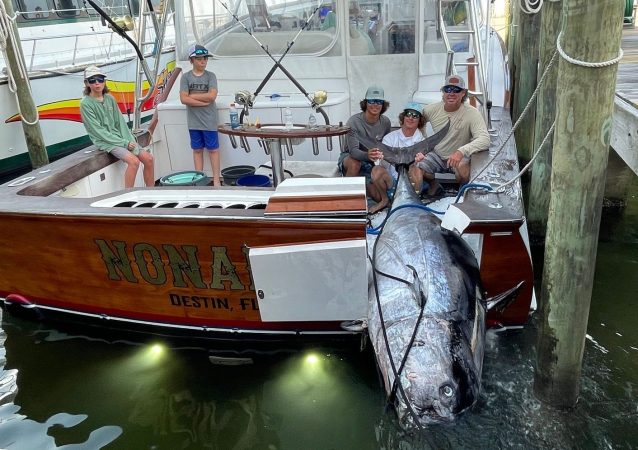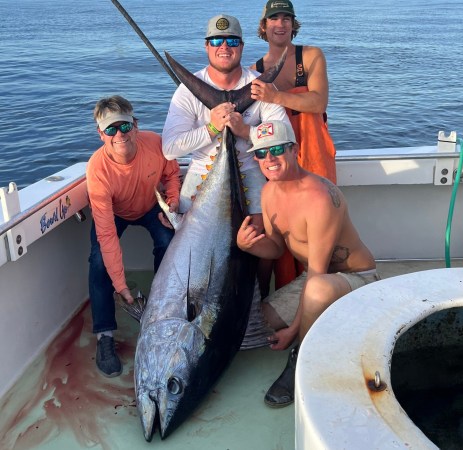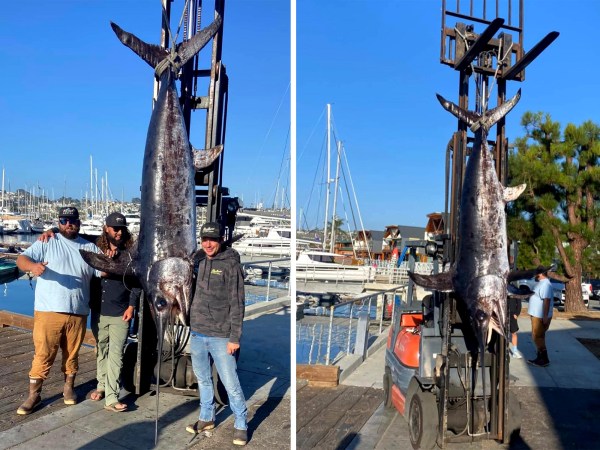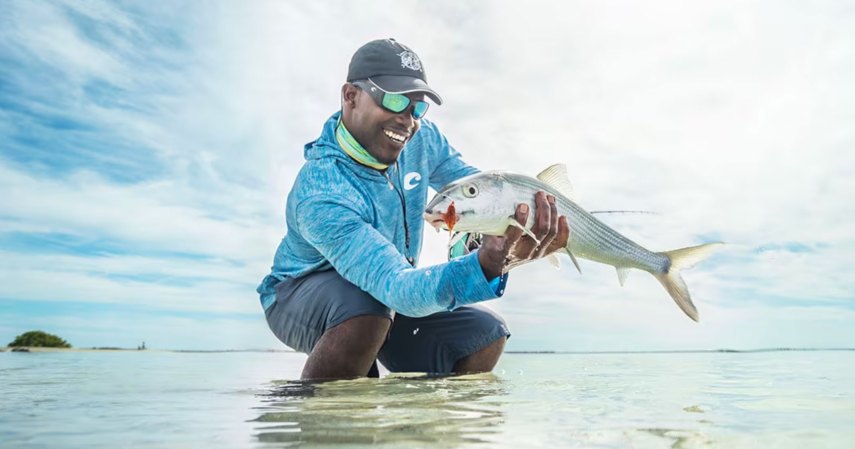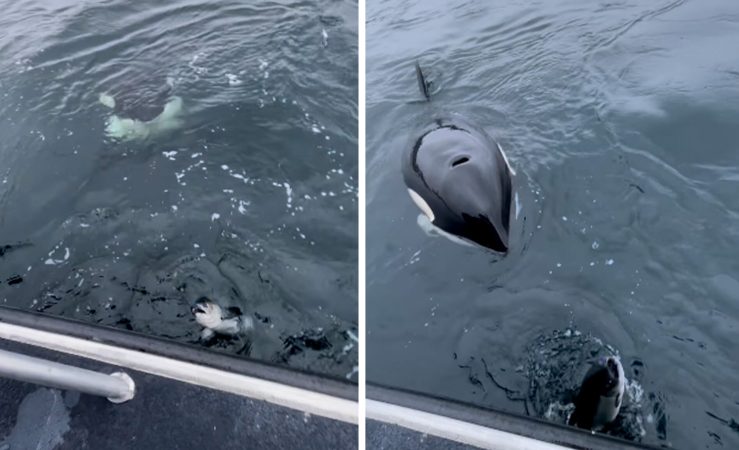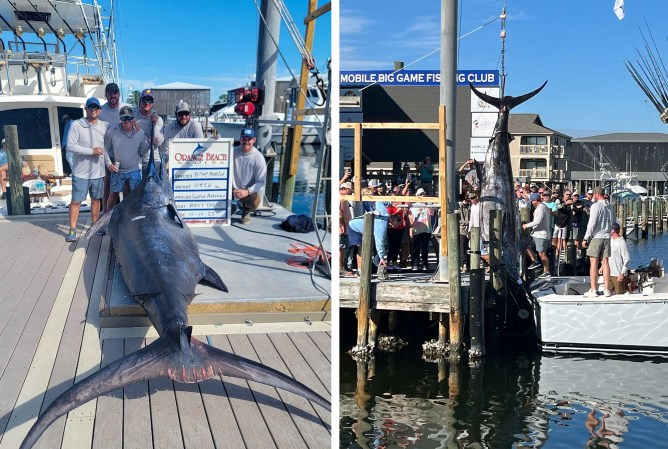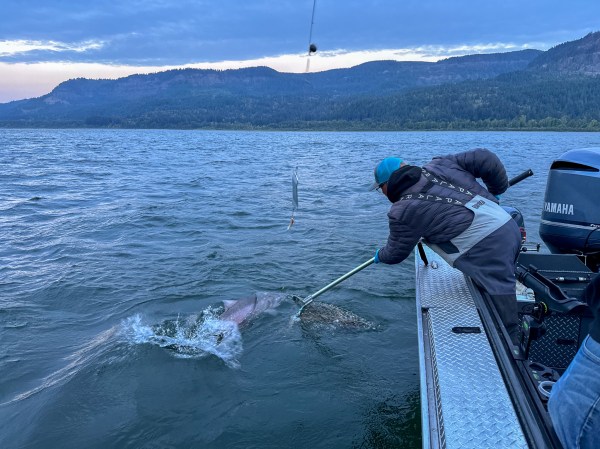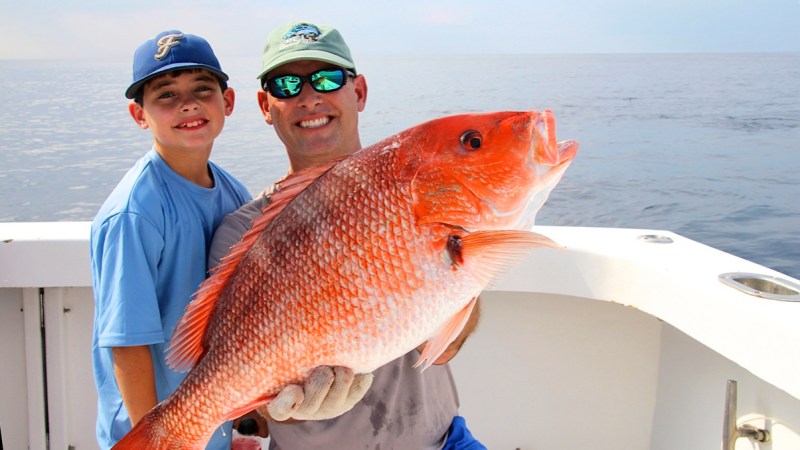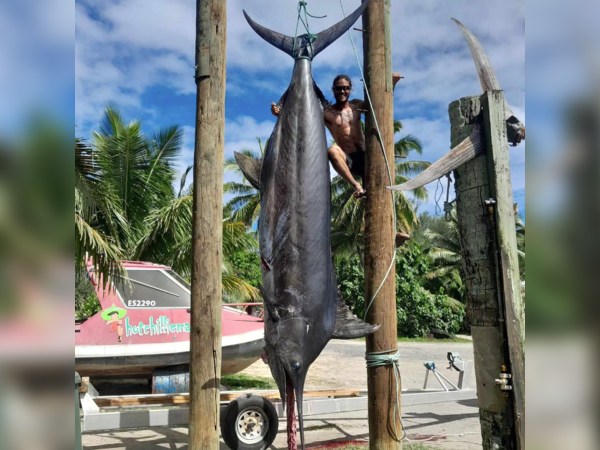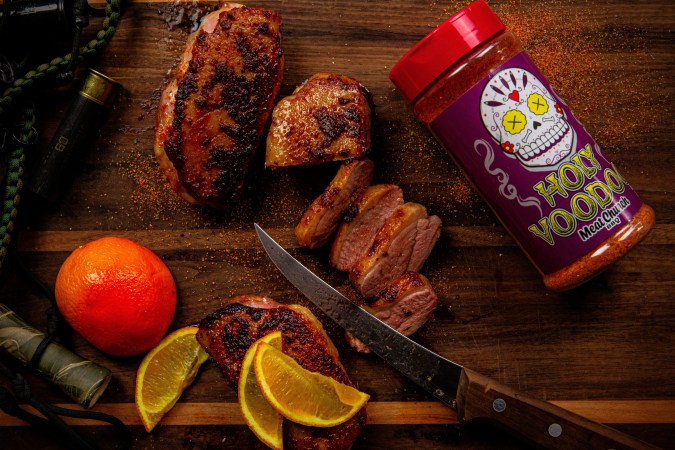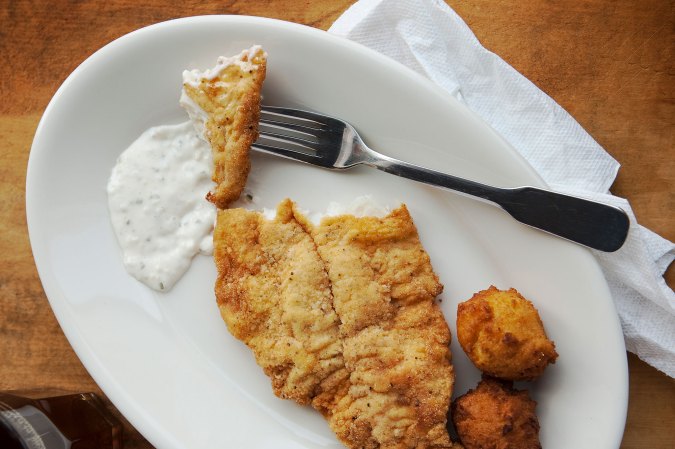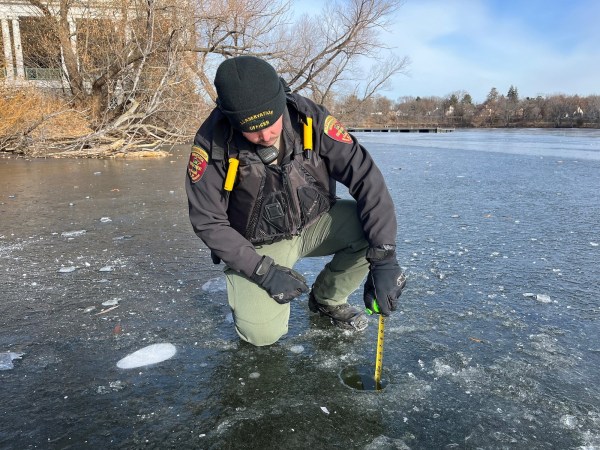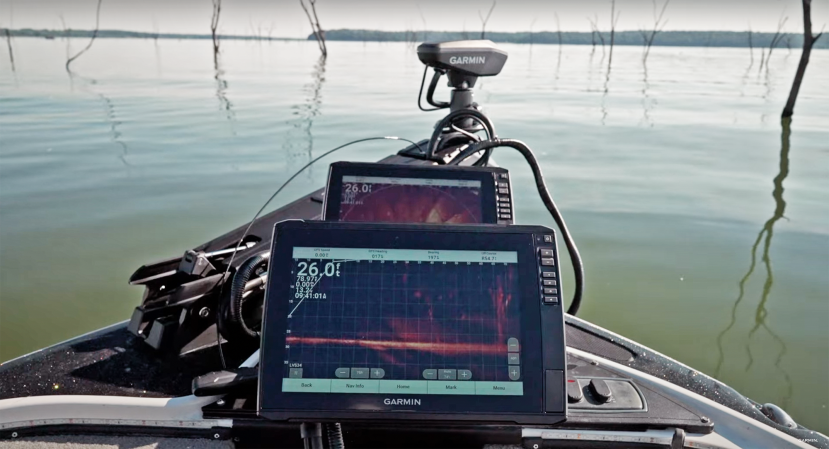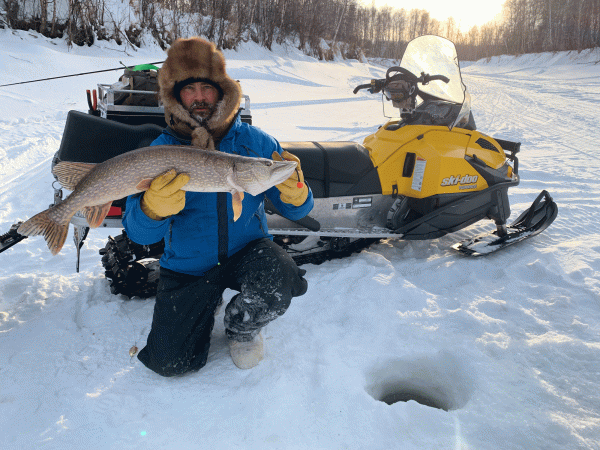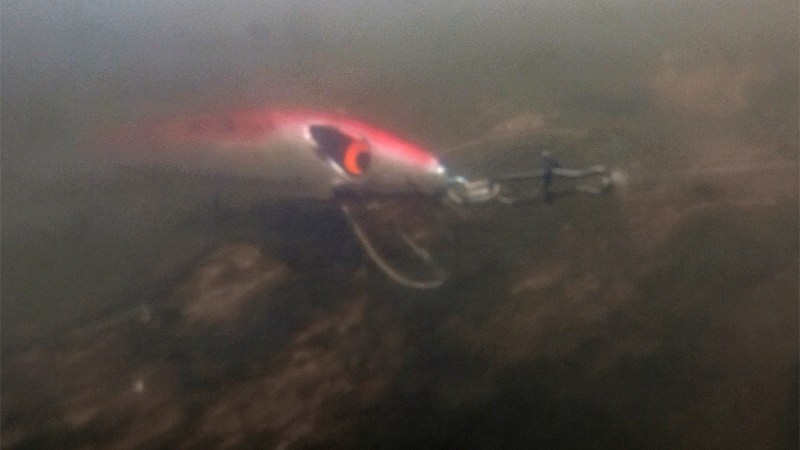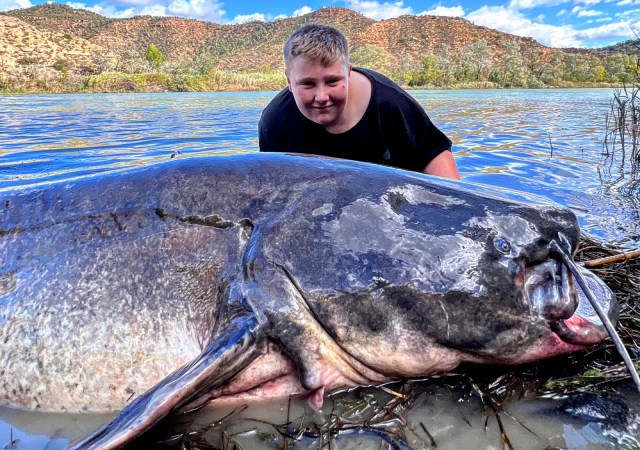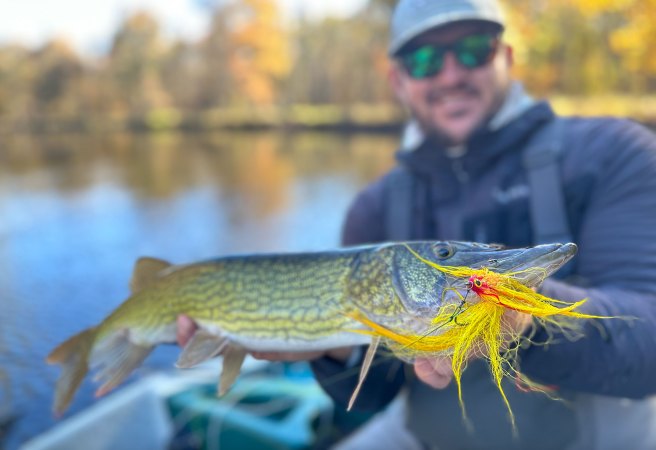Before he began operating a fishing charter off the coast of Southern California, Captain Evan Kraft was a pinhead.
That’s not because Kraft abandoned his mechanical engineering degree to fish (which he had), but because he slid from a paying charter customer into the daily grind of a deckhand. “Pinhead” is slang for guys like Kraft who work for free so they can fish for free.
“Anyone who works in our industry is some kind of crazy,” says Kraft, who has since sweated his way through every role aboard the Spirit of Adventure: cook, deckhand, and ultimately an owner and operator. “Everyone who does this for any length of time has to absolutely love fishing because there’s no other logic in why we do it. Financially, no one’s getting rich off this. It’s way too much work in any position, from cooking to driving the boat.”
Kraft and his crew can easily end up working 24-hour shifts when they’re in fish, scrambling to help customers bait hooks, untangle lines, gaff fish, clean filets, and run the boat. With just seven crew members for as many as 25 paying customers on each of SOA‘s multi-day trips, there’s always work to do.
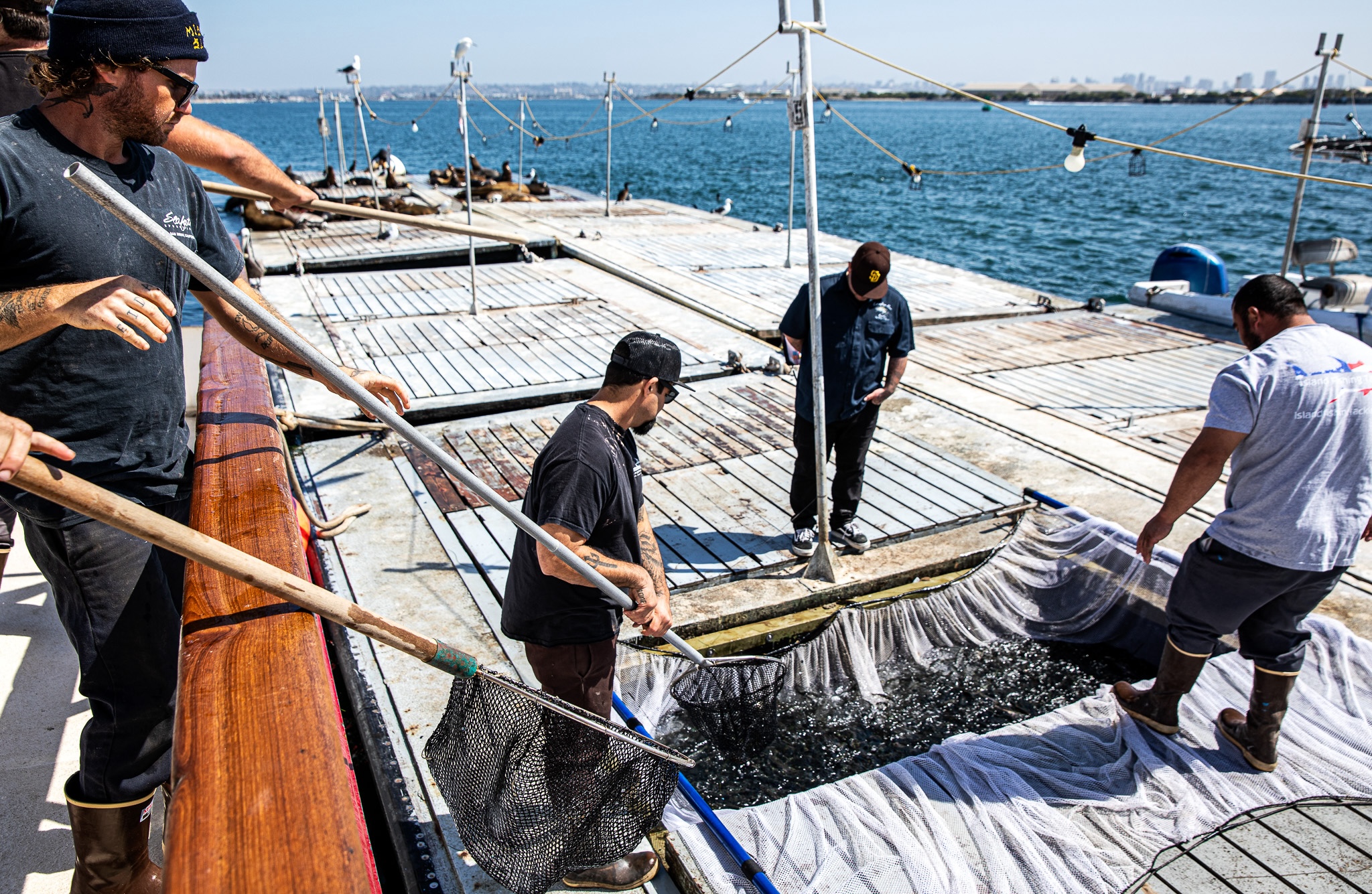
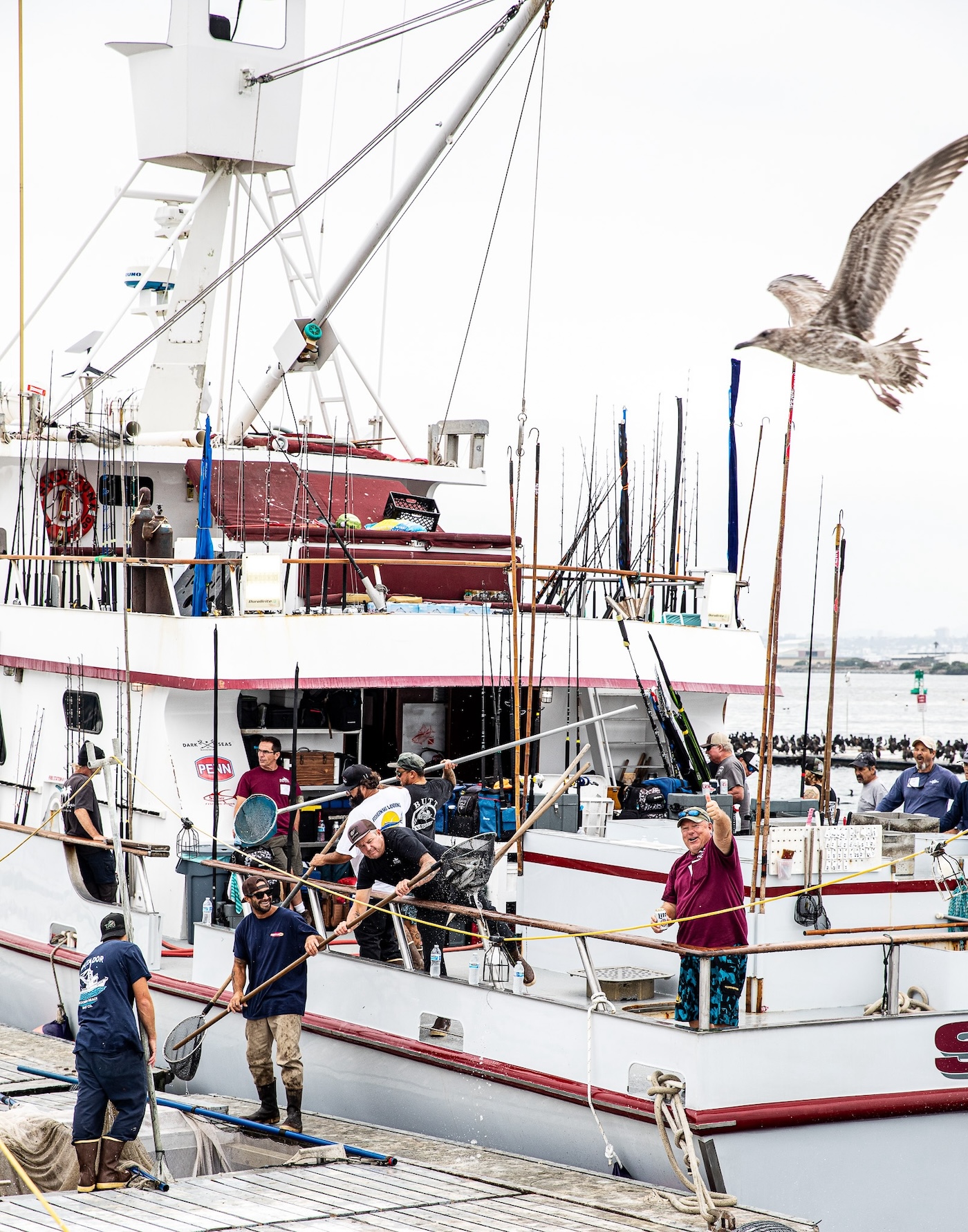
“Our business model really thrives on the amount of trips you’re able to run in one year,” says 34-year-old Kraft, who spoke with Outdoor Life during a travel day at sea. “Ideally you wanna run as much as you can.”
As soon as SOA returns to port there’s a scramble to unload passengers and their fish, they’re loading fresh groceries, fuel, bait, and new passengers. It’s a turn-and-burn pace that works out to about 260 days on the water each year, with Kraft personally aboard for about 85 percent of those trips, which can last anywhere from two to 11 days.
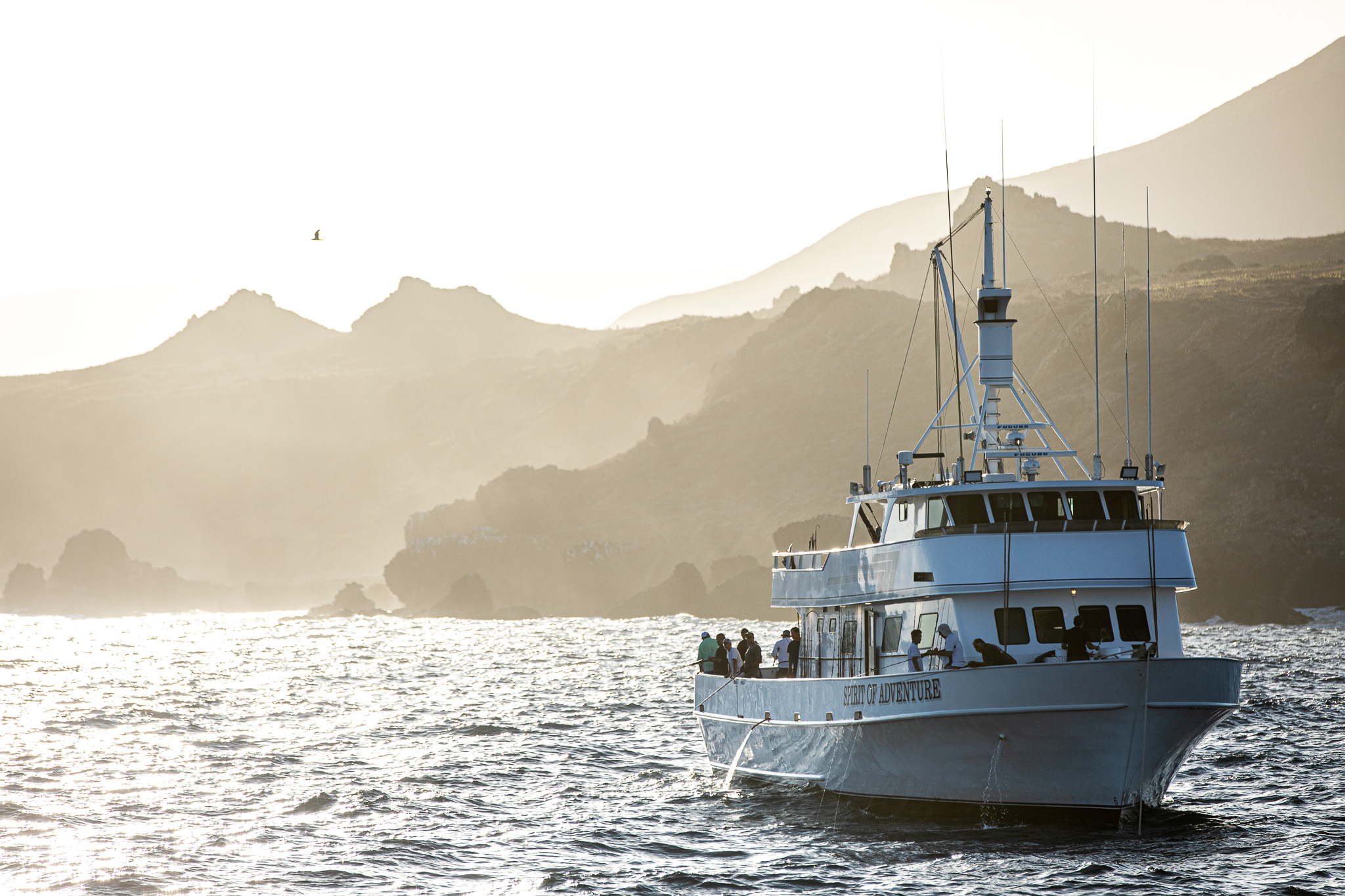
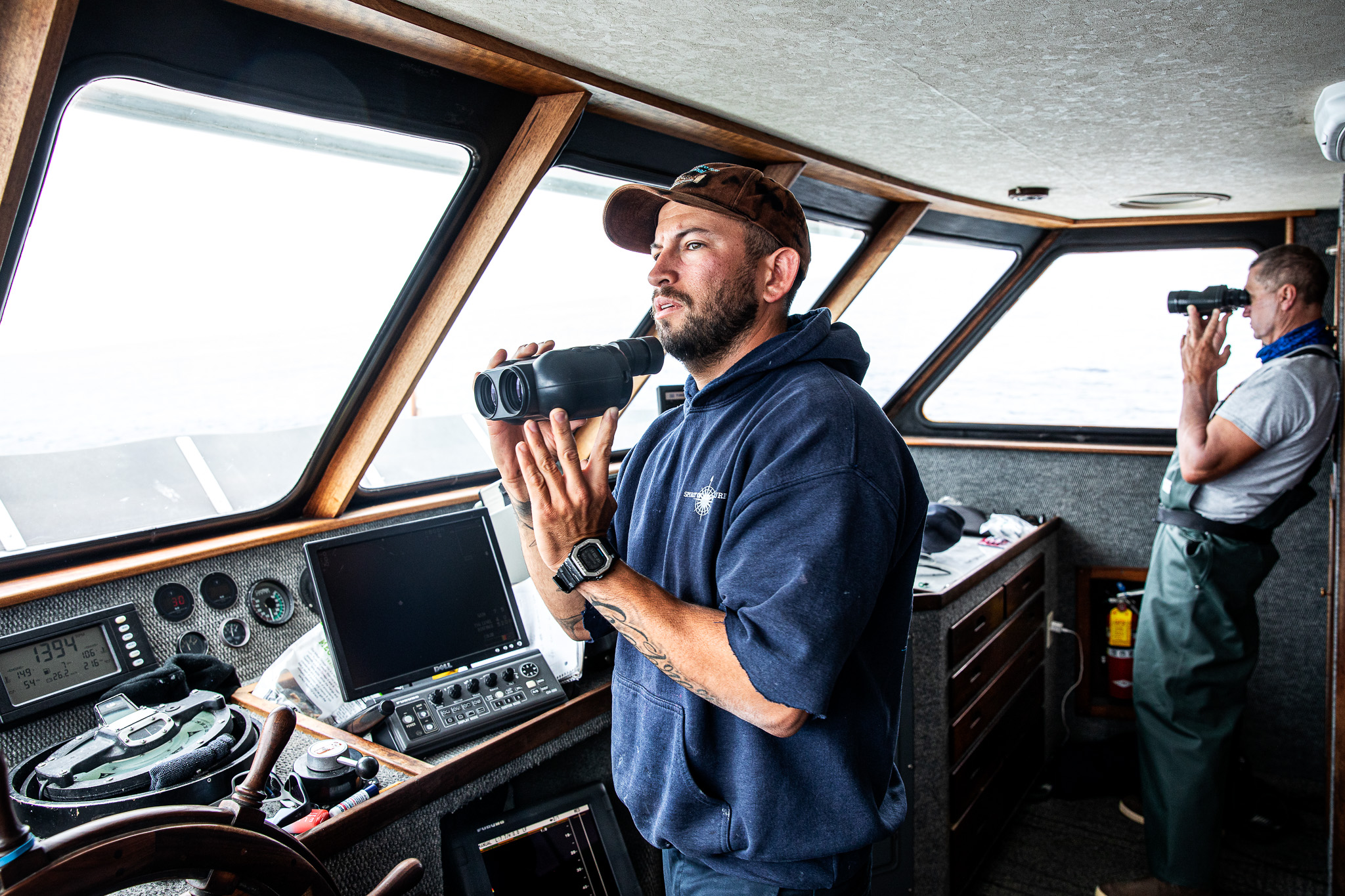
Photo by Tom Fowlks
SoCal charters target different species based on the season, the weather, and the whims of the fish. Customers might catch dorado, yellowfin tuna, yellowtail, and occasionally wahoo. In the last few years, says Kraft, bluefin tuna have become especially popular.
“Every day is different. Fish have moods just like people,” says Kraft, who uses electronics, binoculars, and local intel to locate fish. “Sometimes we see them literally jumping out of the water, sometimes we see them maybe splashing — or a boil, where it looks like boiling water. Sometimes it’s very subtle. You’ll see the water move slightly differently and scan with your electronics and find it’s a giant school beneath the surface. A lesser percentage of the days, you don’t see any sign, and maybe they’re 150 feet down.”
The SoCal charter scene is competitive. Select handfuls of trusted boats, known as “code groups,” swap info about fish and conditions over a coded radio channel to avoid broadcasting to every ship around. (Though they’re separately-owned charters, the two boats photographed in this story — Spirit of Adventure and Shogun — are in the same code group.)
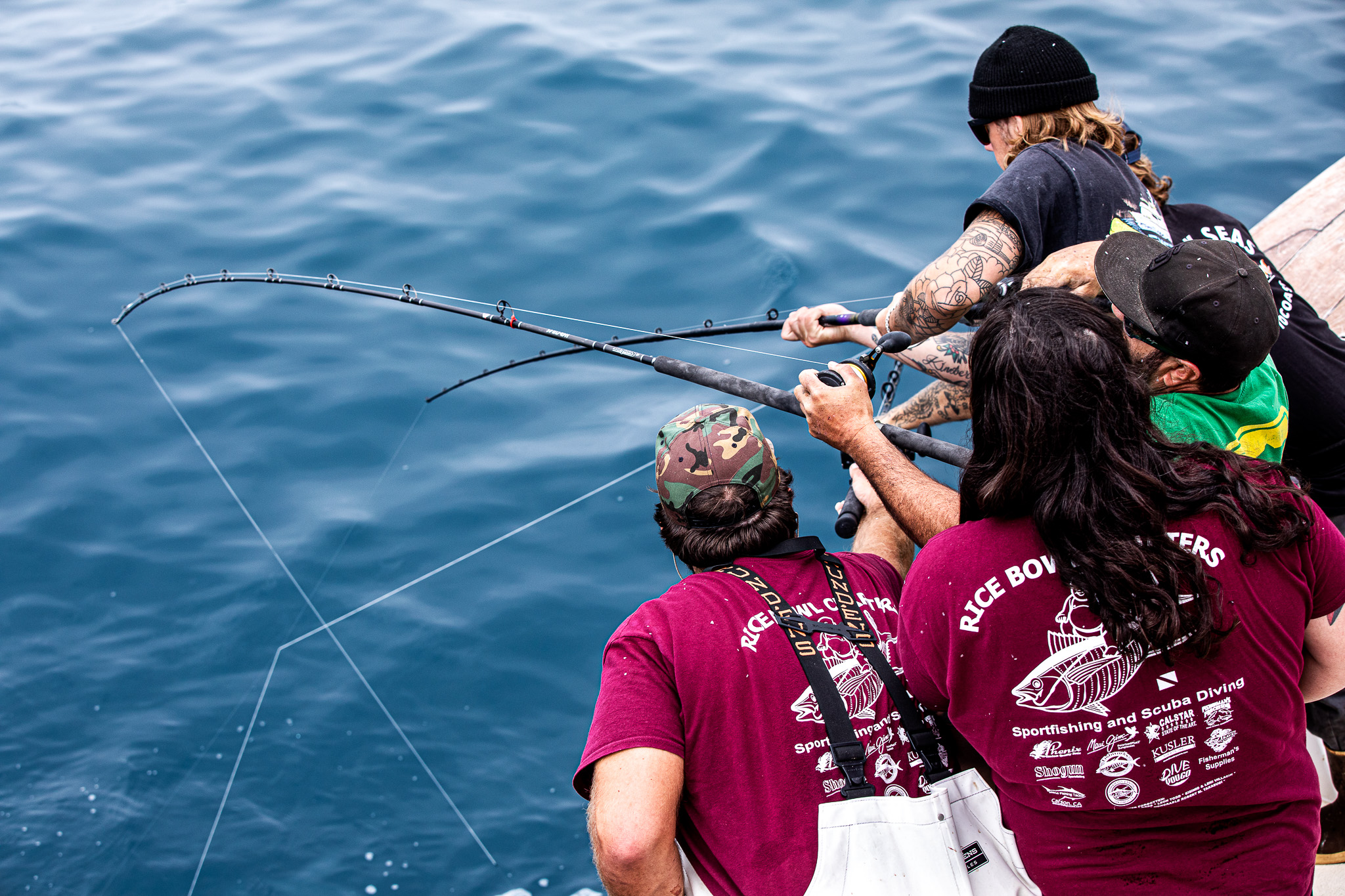
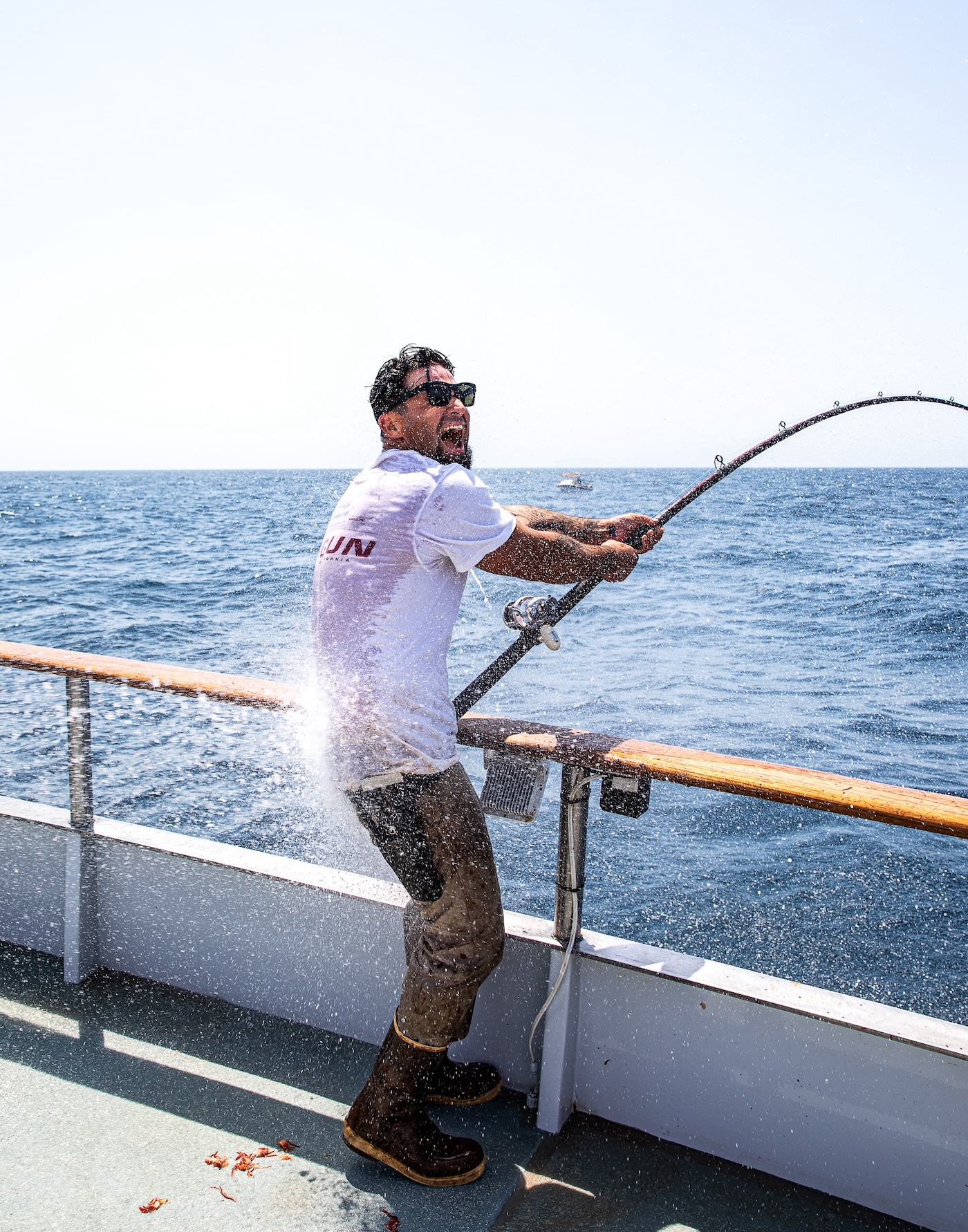
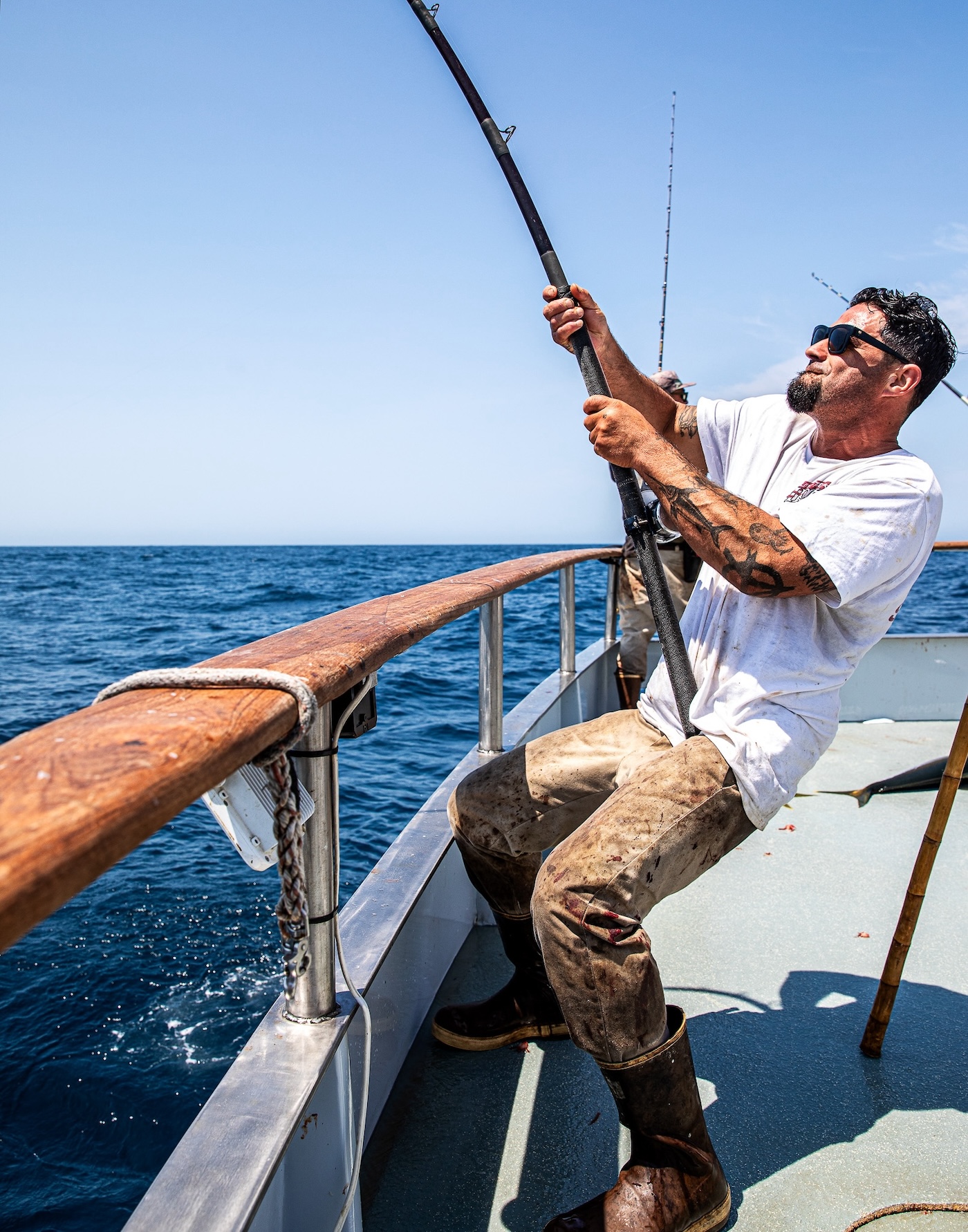
SOA will venture anywhere from 10 to 100 miles from San Diego on shorter trips. It’s common to see bluefin tuna around the invisible border between U.S. and Mexican waters, but often Kraft will travel north toward San Clemente and farther in search of tuna.
“In the past five years the bluefin fishery is very obviously in very good health,” says Kraft. “We see more fish every year as far as volume, and the range of different sizes, which tells us the health of the population is very strong because we are seeing everything from nearly newborns — as small as 2-pound fish — all the way up to over 300 pounds. The range of different ages of fish and the sheer volume of biomass that we see has been increasing every year.”
“Bluefin are a very strong fighting fish and they have far better stamina than any human being. A newcomer, their natural logic is, oh I’ll tire out the fish and he’ll come in. That’s not the case. Just about every time the angler tires out before the fish does. So it really does come down to the choice of gear and the angler’s technique.”
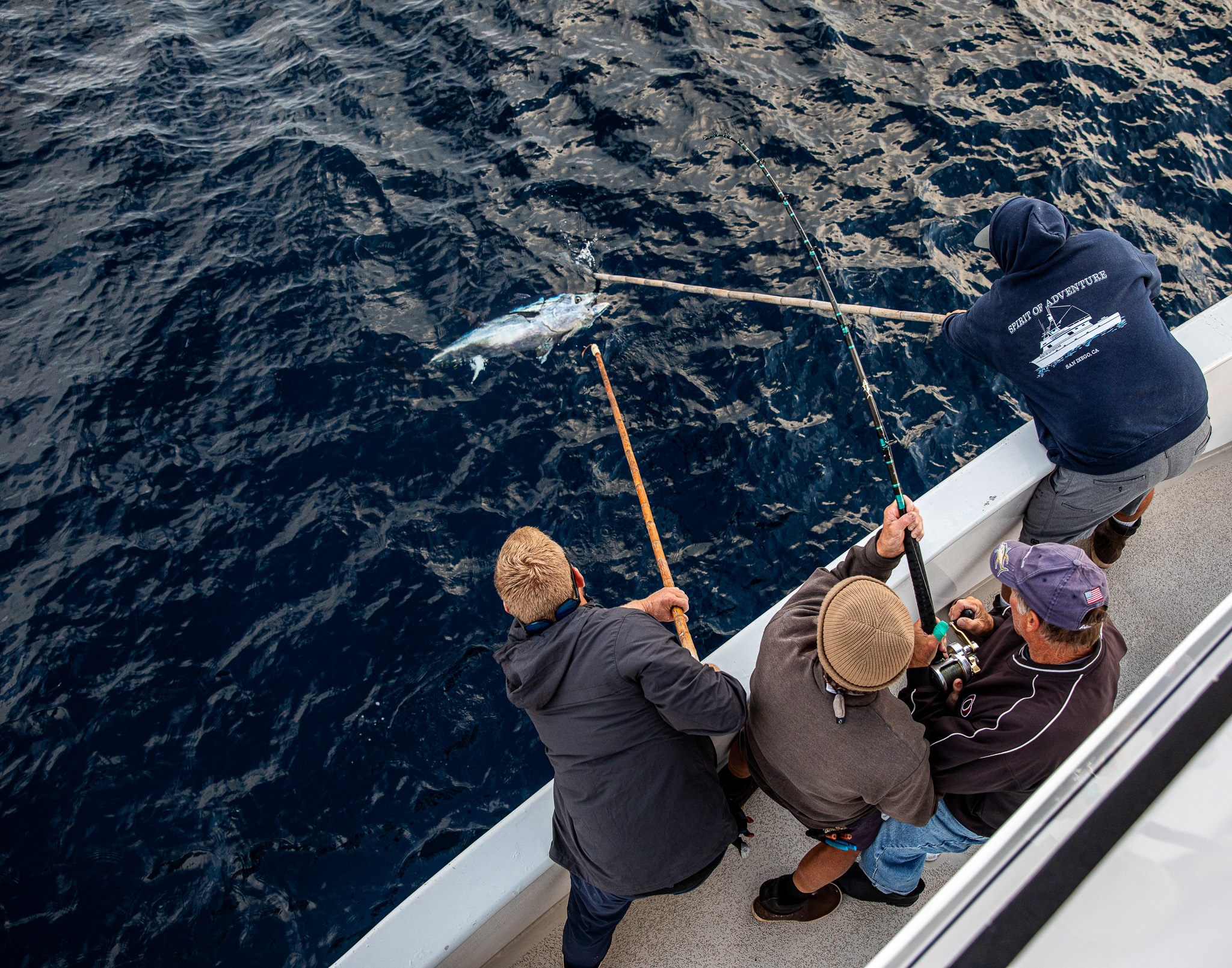
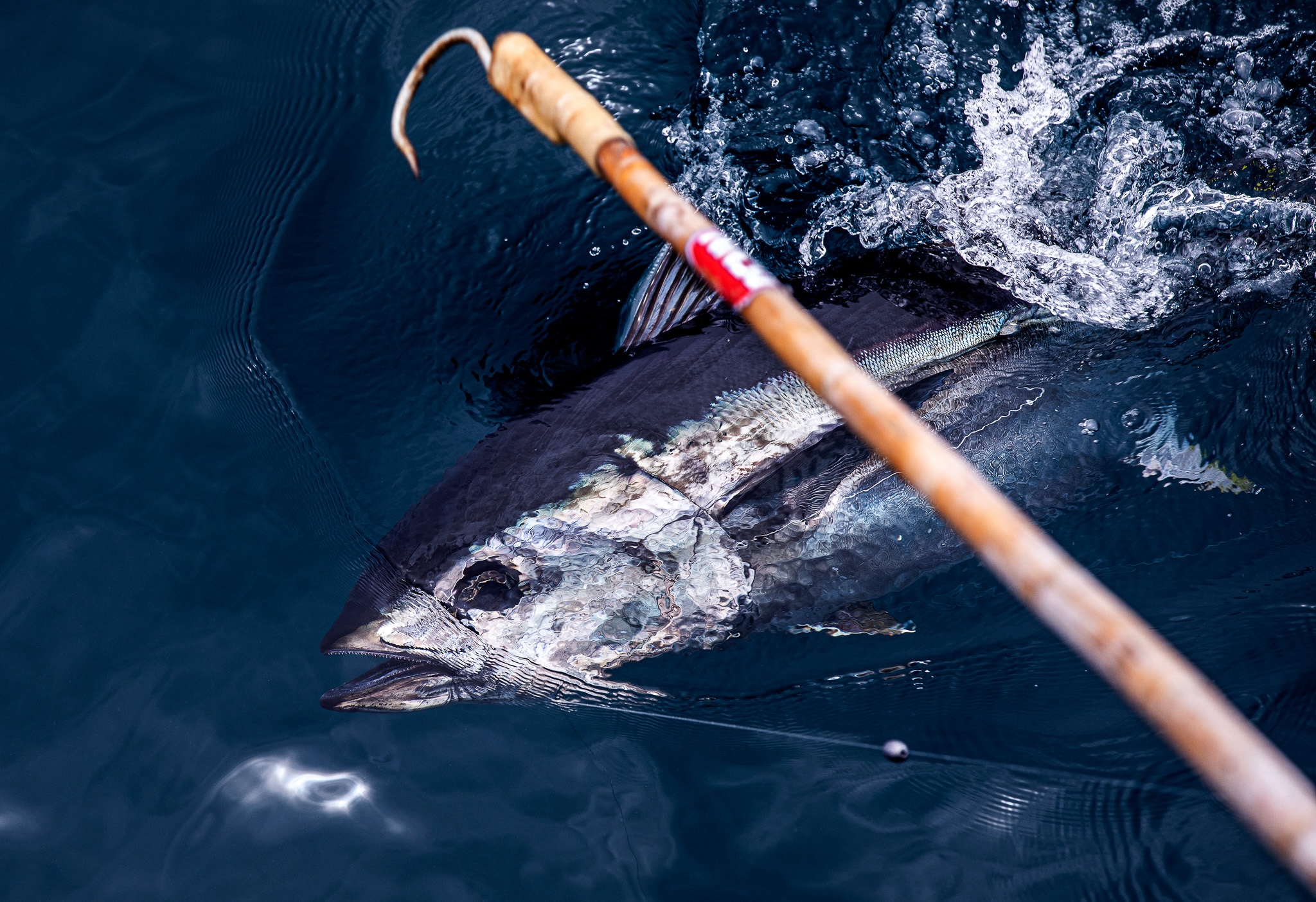
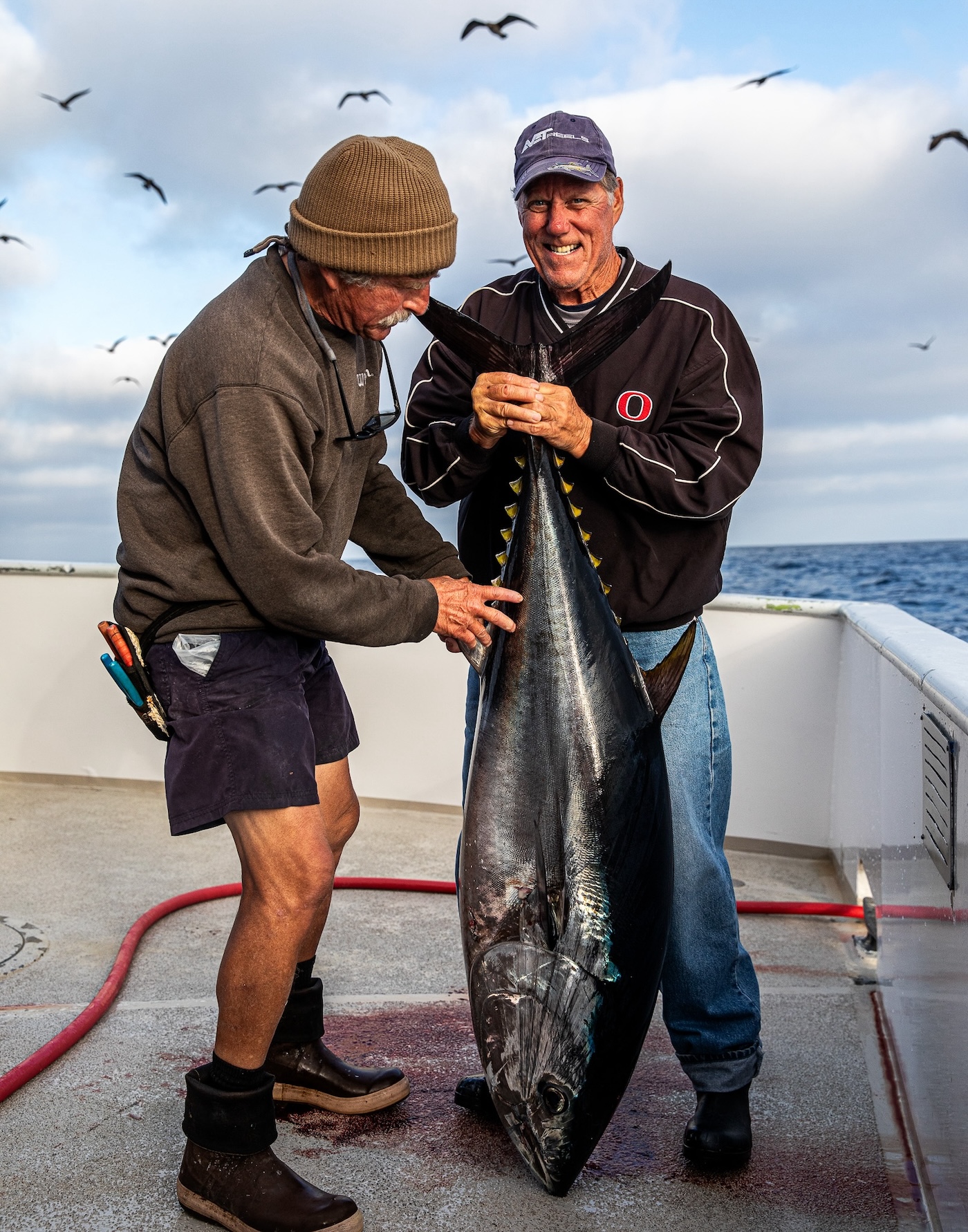
Because crew members are so busy helping paying customers catch fish, there’s little to no time to fish for themselves. This arrangement doesn’t bother Kraft, who looks at his trips as a collective victory for everyone aboard.
“We all understand what that kind of high feels like when someone catches a fish. So it’s rewarding for us to be able to share that feeling. It’s clear when someone is stoked for a fish, and being able to provide that high for them is where we find our reward.”
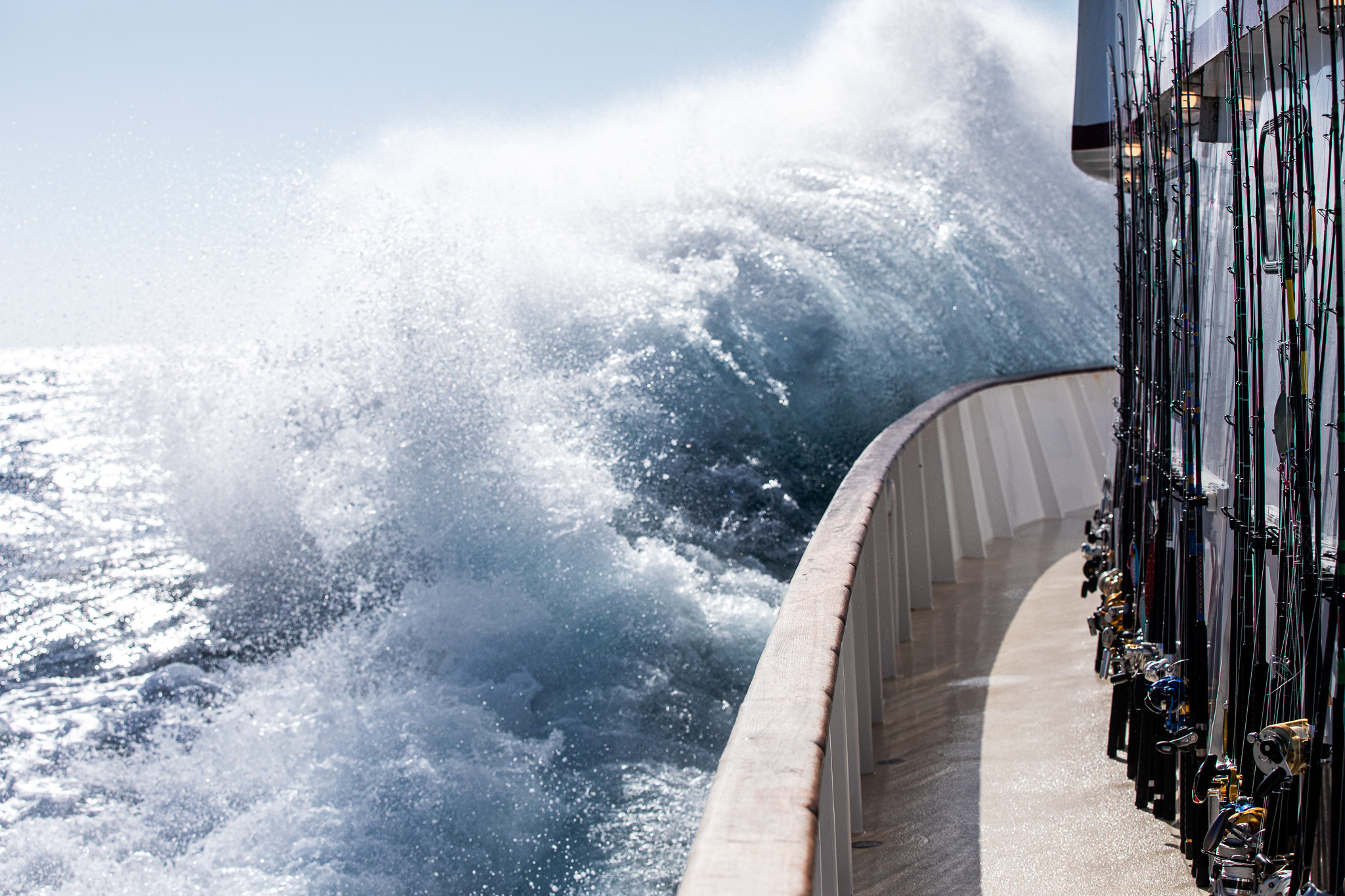
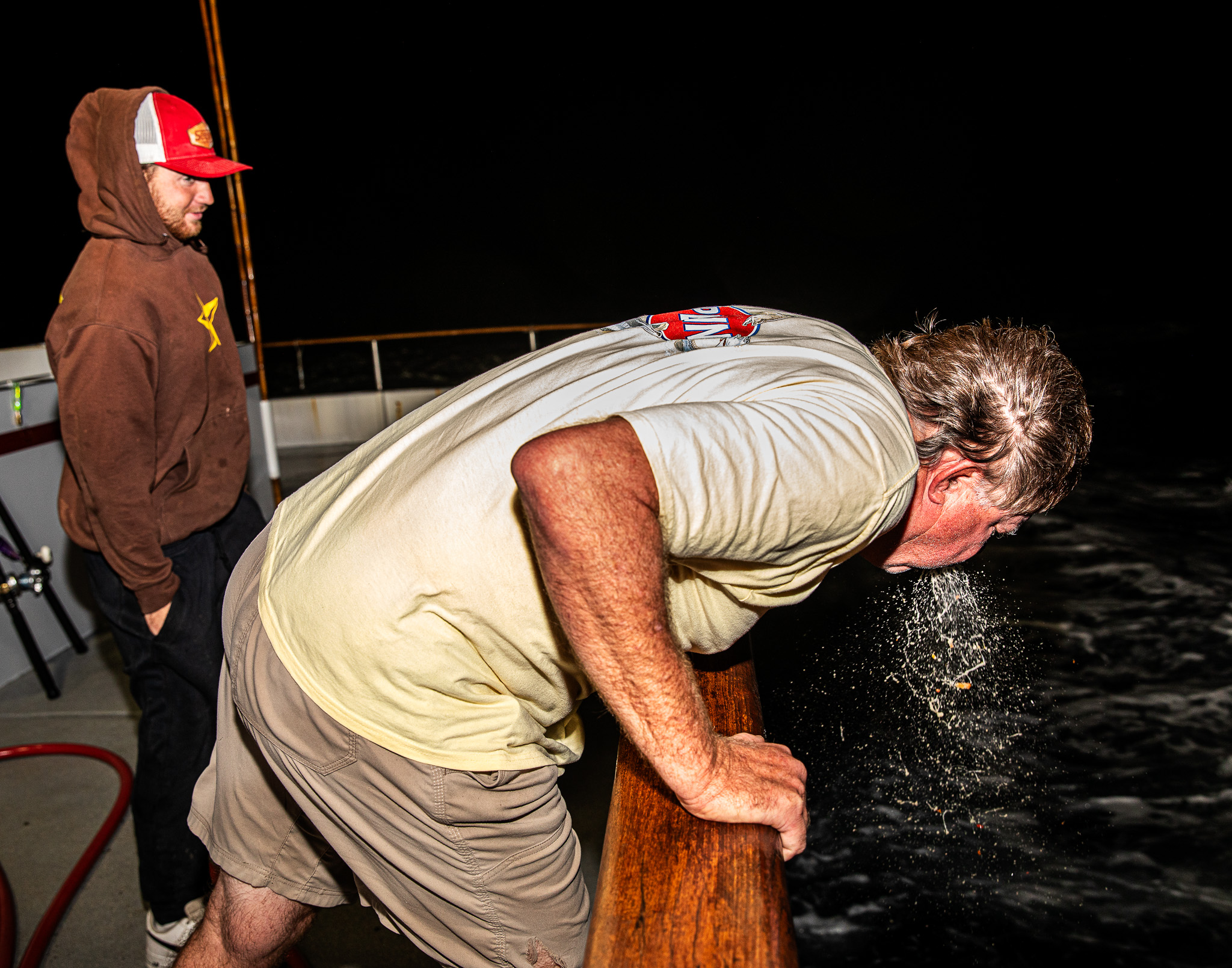
“It’s absolutely not possible to make it as crew if you get seasick,” says Kraft. “It’s not gonna work.”
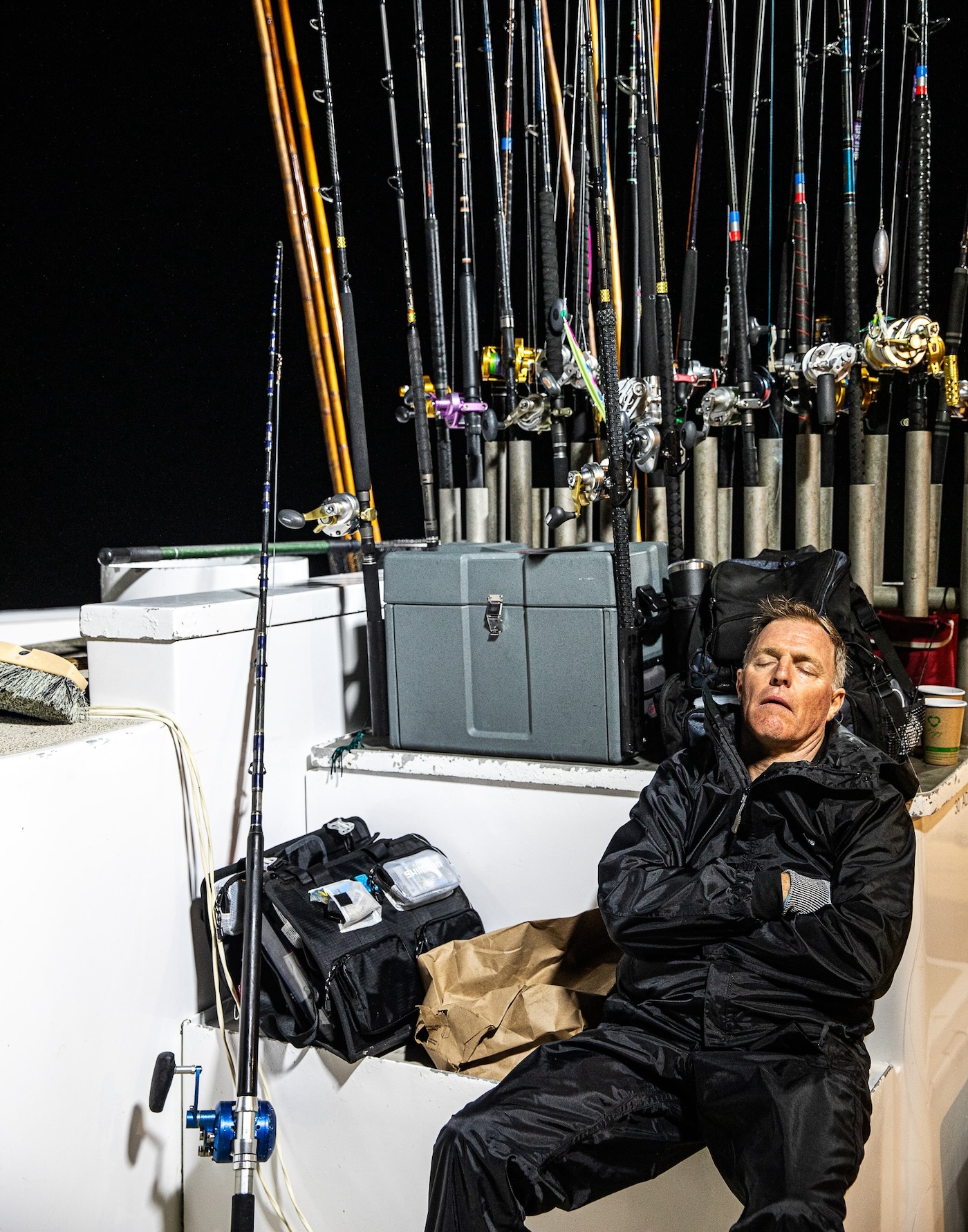
Late-night fishing is a regular fixture of SoCal charters, and often while customers fish with live bait and 40 to 50-pound test during the day, they’ll switch to artificial lures and heavier 100-pound test once the sun sets.
Read Next: The Best Saltwater Fishing Rods
“In the dark, the fish cannot see the size of line as easily, so they’re more willing to bite a heavy line at nighttime,” says Kraft. “On a three-day trip, a lot of anglers will try to spend as much time at the rail as they possibly can. That’s really the best way to increase their chances at catching more fish.”
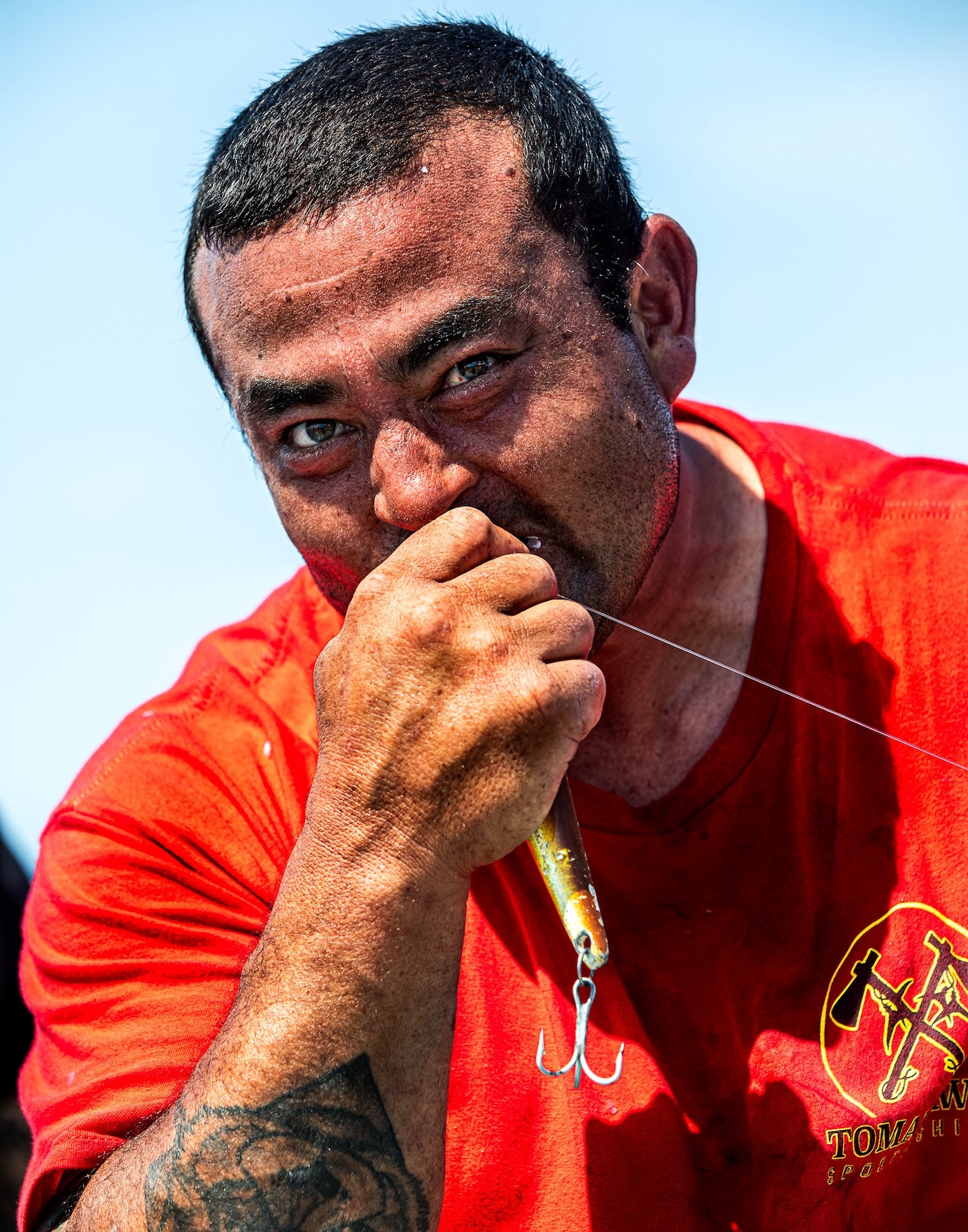
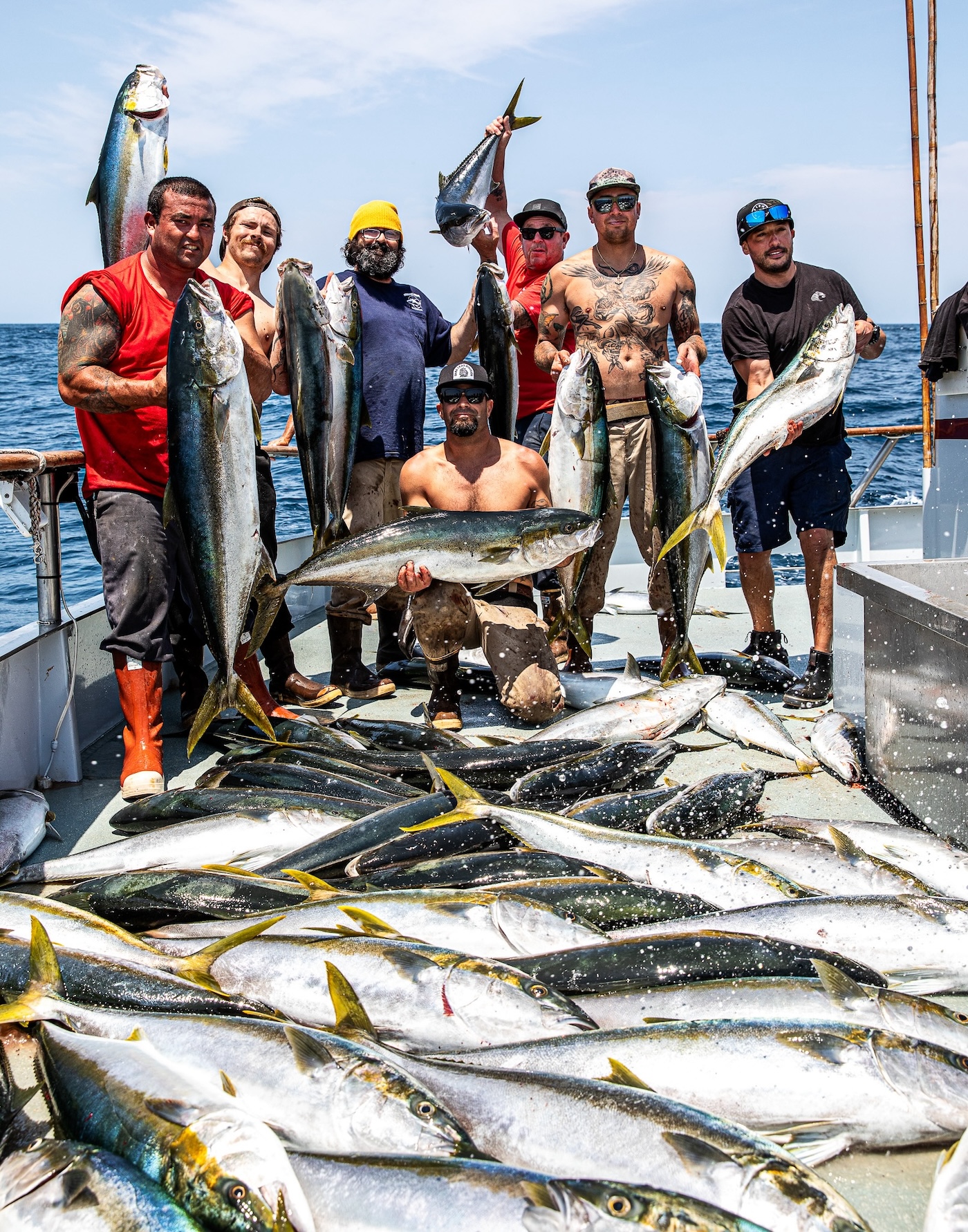
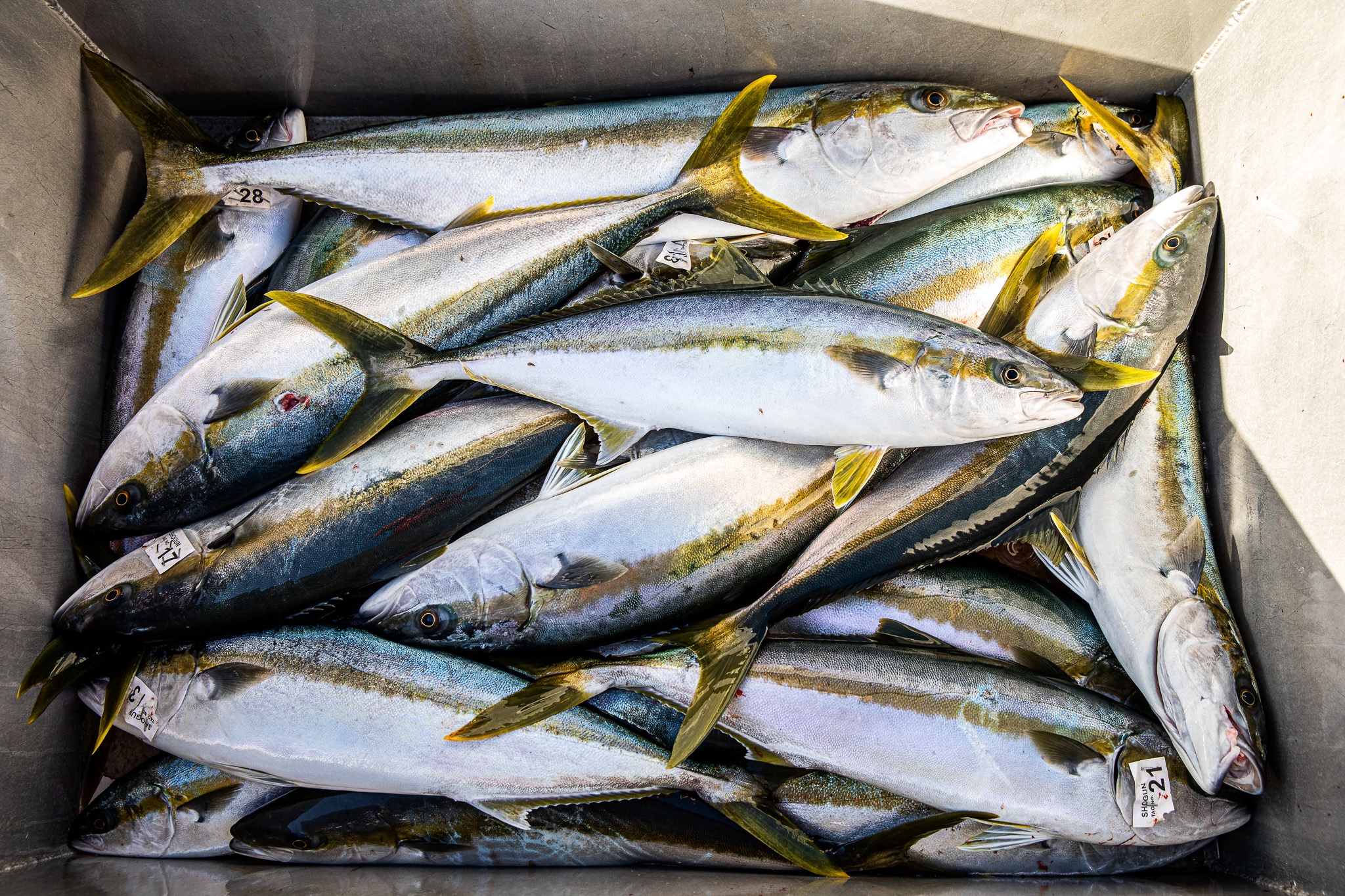
Charters may catch literal piles of fish, but their business is strictly regulated. The California Department of Fish and Wildlife requires the crew to log their catch at least every 24 hours of a trip to detail how many fish they’ve caught, which species, who caught them, and so on. Boats are inspected for compliance with regulations, including limits.
To help keep track amid the chaos on deck, each customer receives a number that refers to everything from his fishing limits to his bar tab. Each fish he catches is tagged with that number for legal reasons, but also so customers can be sure they’re taking home filets from fish they personally caught.
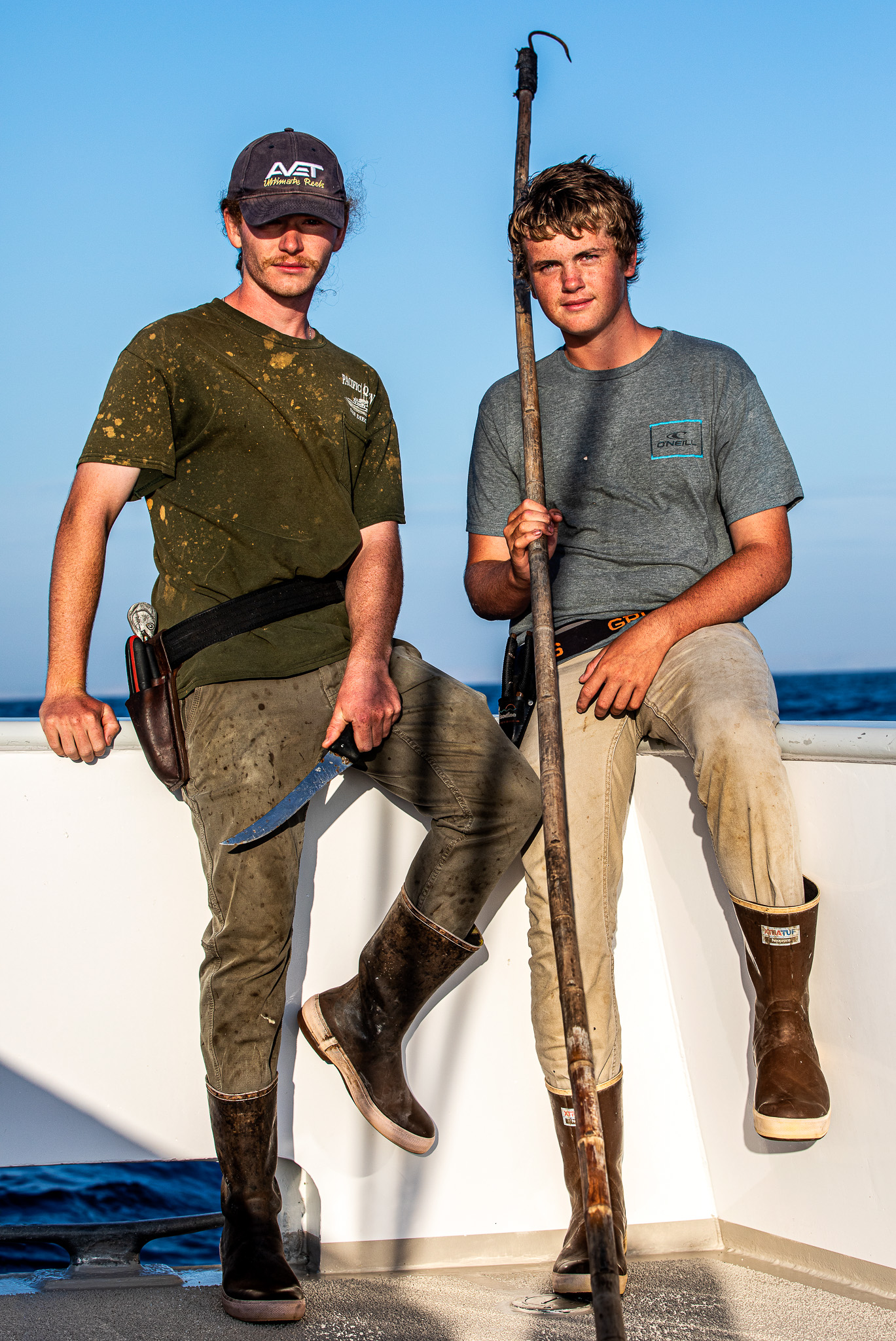
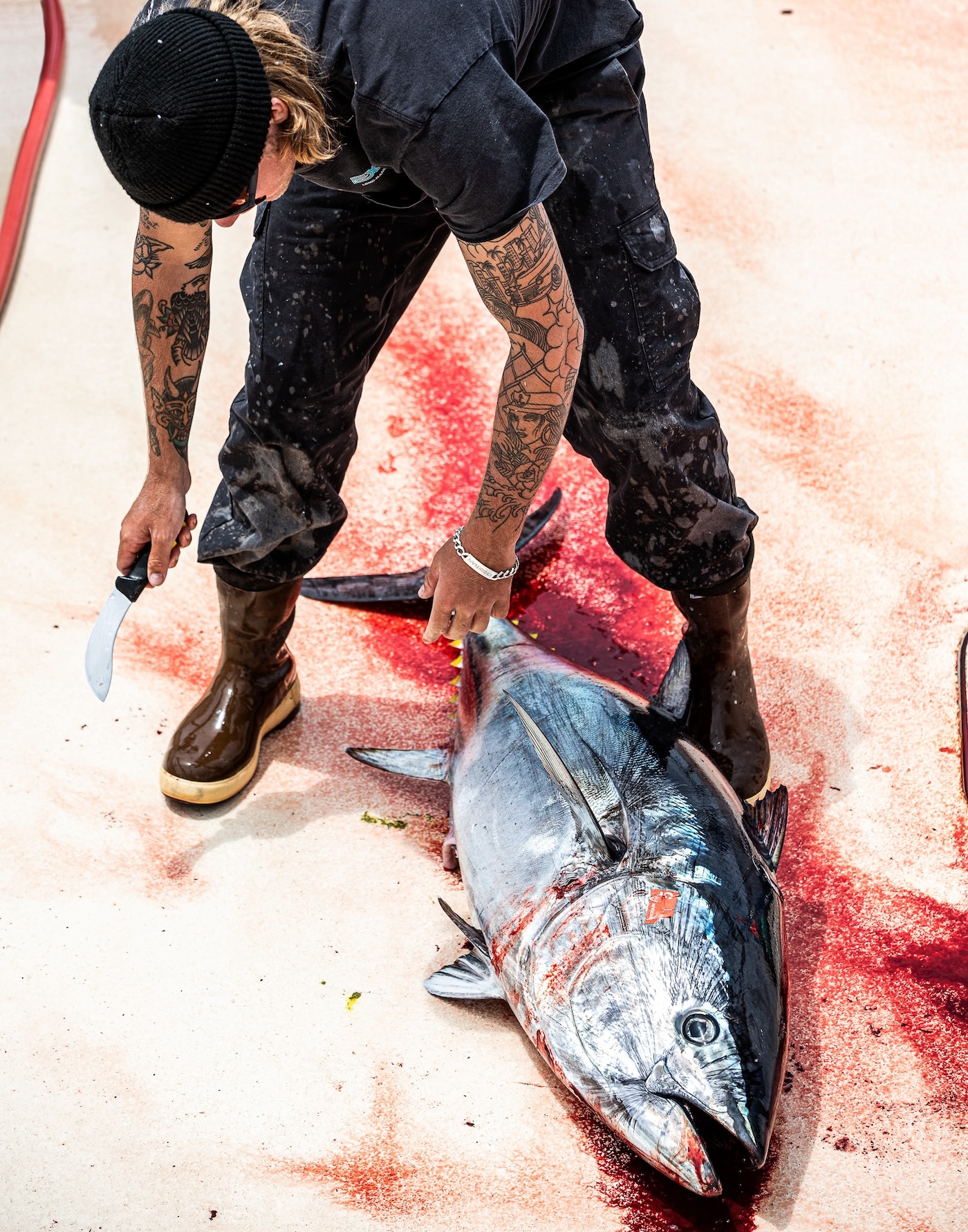
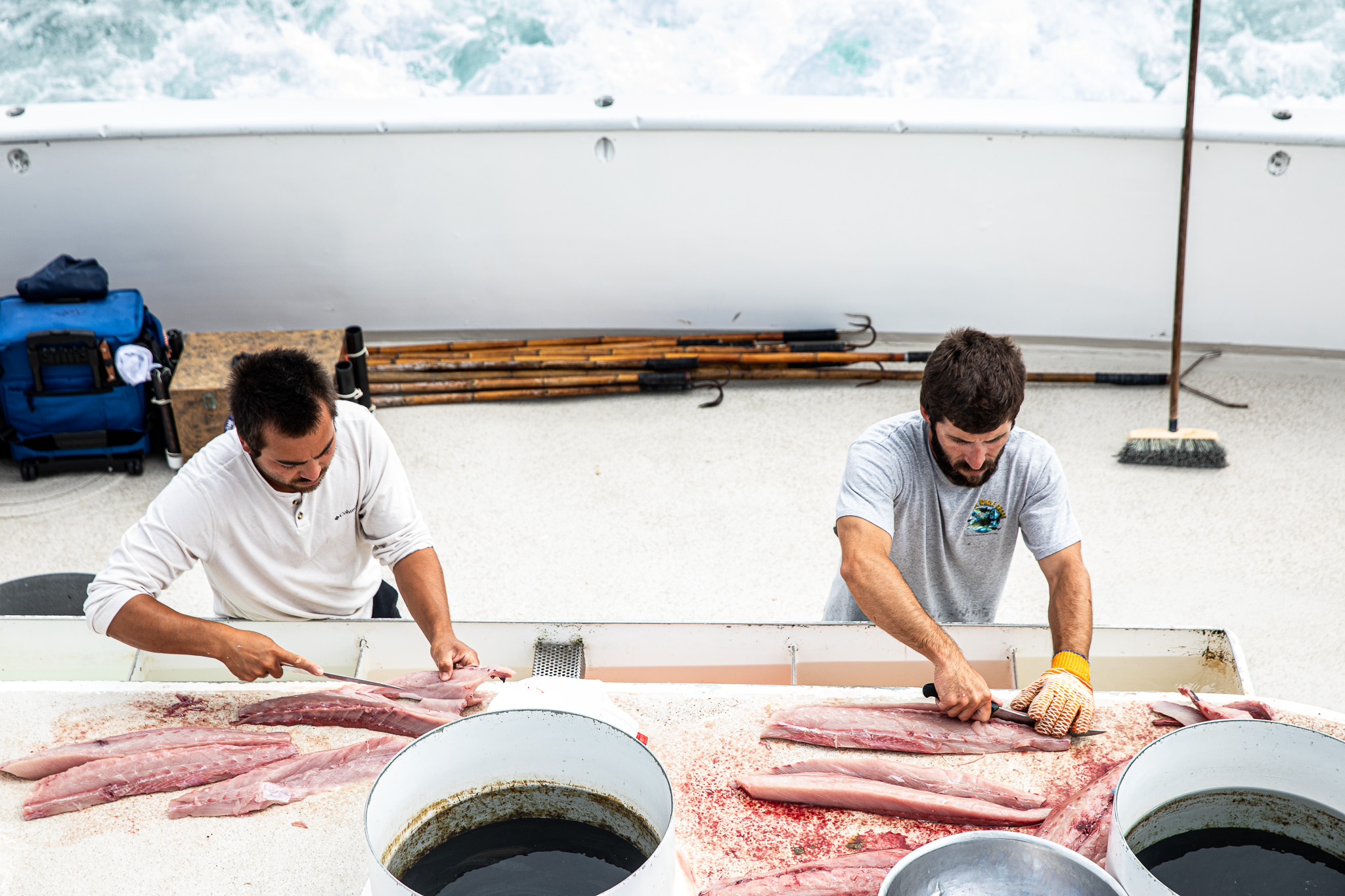
According to Kraft the average charter deckhand is more educated than ever about how to best care for fish while at sea. That starts with careful gaff placement to avoid ruining meat. As soon as a fish hits the deck (gently, so as not to bruise the meat) a deckhand dispatches it with a spike to the brain or spinal cord, which kills the fish quickly and reduces thrashing, which can stress the meat. Next, the gills and guts are cut away and the blood drained to preserve freshness and flavor. Finally, the fish are stored in the SOA‘s chilled refrigeration system.
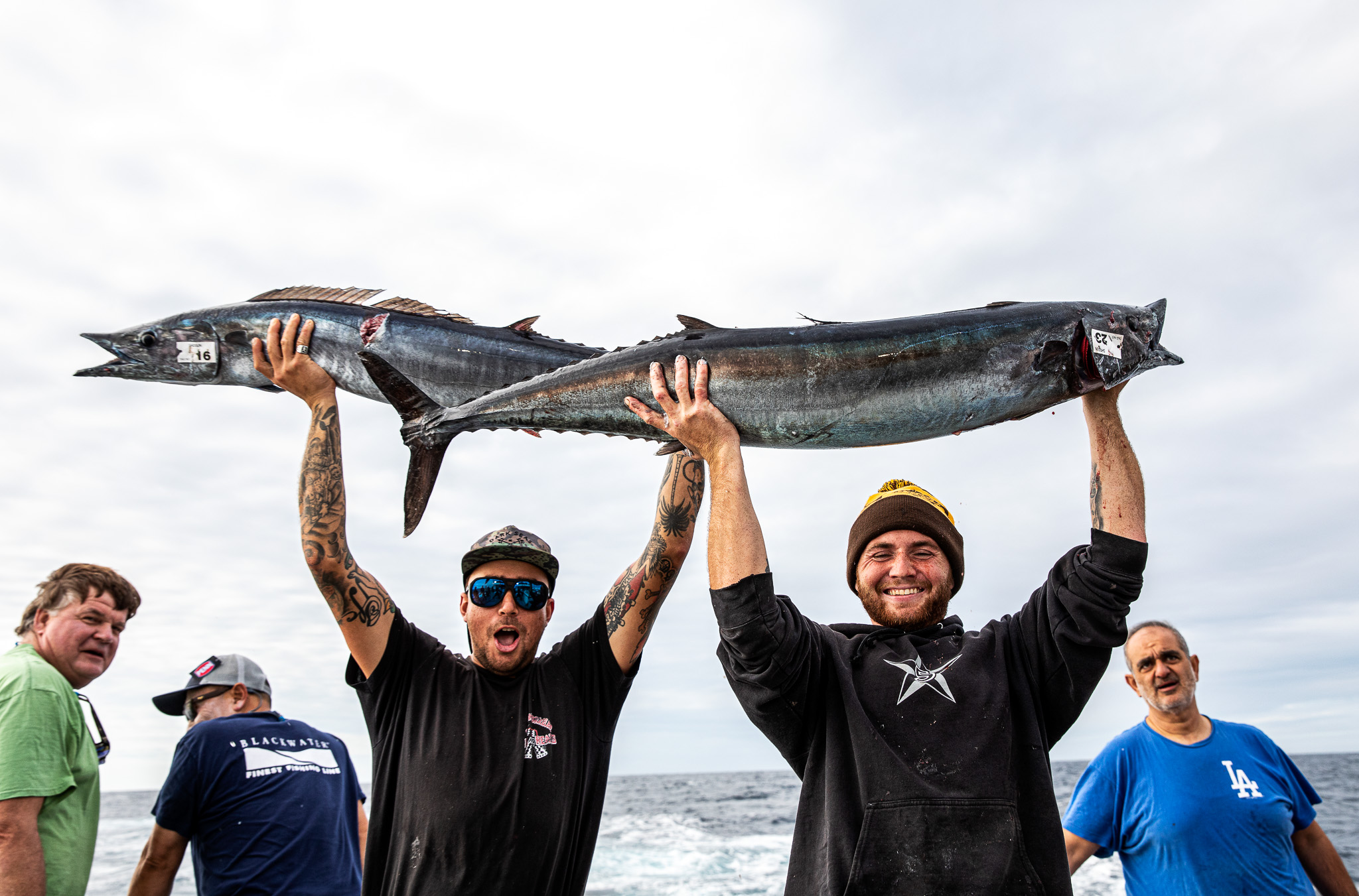
“A lot of us can’t go without this,” says Kraft. “Guys who’ve been on the boat for a long time can’t wait to get off the boat. But when they’re home they can’t wait to get back out. It doesn’t make sense but it’s something that’s in you. You can’t get enough of it.”
